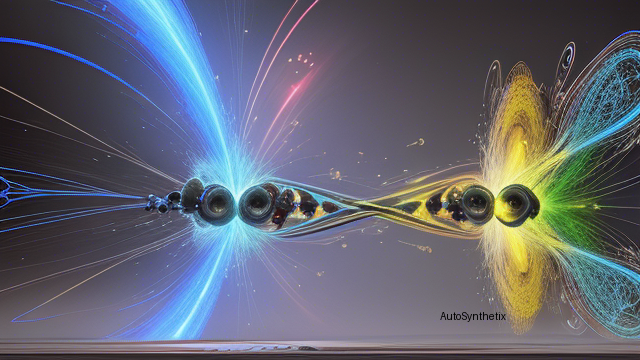Introduction In the ever-evolving landscape of scientific discovery, Artificial Intelligence (AI) continues to push boundaries by influencing diverse fields significantly. One captivating development lies within the realms of High Energy Nuclear Physics – particularly in how researchers leverage modern deep learning techniques to tackle complex simulations associated with cutting-edge experimental setups. This article delves into a groundbreaking study exploring the utilization of 'diffusion models', specifically applied towards replicating intricate electron-proton collision scenarios crucial to renowned facilities such as Thomas Jefferson National Accelerator Laboratory's Continuous Electron Beam Accelerator Facility (CEBAF), the forthcoming Electron-Ion Collider (EIC), alongside prominent international collaborators.
The Quest for Quarks - Understanding Subatomic World through Advanced Machine Learning Techniques Advanced accelerator laboratories worldwide strive to unravel mysteries surrounding the fundamental constituents of protons, neutrons, atomic nuclei, and their underlying quantum chromodynamics (QCD). Experimental investigations involving electron-hadron interactions offer unique perspectives into these enigmatic structures due to electroweak processes' comparatively simpler nature. However, accurate computational modeling remains challenging owing to factors like scarcely available training datasets, extensive interdependencies among outcomes across individual colliding events, coupled with rapidly declining probability densities concerning emitted particles. Consequently, there arises a pressing need for innovative approaches capable of generating reliable synthetic data while addressing inherent complications.
Enter the "Diffusion" Stage - Embracing Novelty in AI Approaches for Complex Event Reconstructions This pivotal research introduces the application of 'diffusion models' - a class of powerful generative neural network systems - to reconstruct highly convoluted electron-proton scatterings occurring under EIC conditions. By employing diffusion models, scientists aim to address three principal hurdles commonly encountered when handling generative modelling tasks related to collider studies:
1. Data Sparseness: Insufficient historical observations often hinder robust training regimes essential for creating precise predictors.
2. Global Dependence: Events from these colliders frequently exhibit widespread interconnections necessitating a more holistic viewpoint rather than isolated occurrences.
3. Tail Dropoff: As mentioned earlier, particle distribution tails tend to fall precipitously, making them difficult to capture authentically using traditional methodologies.
By implementing diffusion models, the team successfully demonstrates its potential in reproducing key physical features indicative of electron-proton encounters. Notably, they observe successful rendering of salient characteristics, namely: a. Momentum Distribution Patterns - Properly reflecting energy transfers between interactants during collisions. b. Correlations Amongst Scattered Particles - Capturing nonlocal dependencies prevalent throughout multiple stages of the experiment. c. Sum Rules Observance - Adhering strictly to conservation principles governing overall system behavior. d. Leading Electron Kinematic Fidelity - Maintaining consistency regarding initial state lepton properties entering the interaction zone.
Although the current iterations of diffusion models showcase slightly slower sample generation rates relative to alternative ML architectural counterparts, the findings underscore remarkable promise in delivering faithful representations vital to further advancements in our comprehension of elementary building blocks constituting visible matter. Ongoing efforts hold immense prospects not just limited to refining inferential strategies pertinent to nuclear architecture but also herald expansions into novel domains seeking explanations transcending the established confines of the Standard Physical Model.
Conclusion As science marries artificial intelligence advances, breakthroughs emerge, reshaping conventional understandings. Exploring new frontiers in applying diffusion models for simulating rarefied yet critically important electronic-proton encounter recreations epitomizes one such instance. With continued innovation driving AI forward, physicists stand poised to glean deeper insights into the microcosmic realm, potentially unlocking extraordinary discoveries awaiting unearth beneath layers of complexity. |
Source arXiv: http://arxiv.org/abs/2310.16308v2
